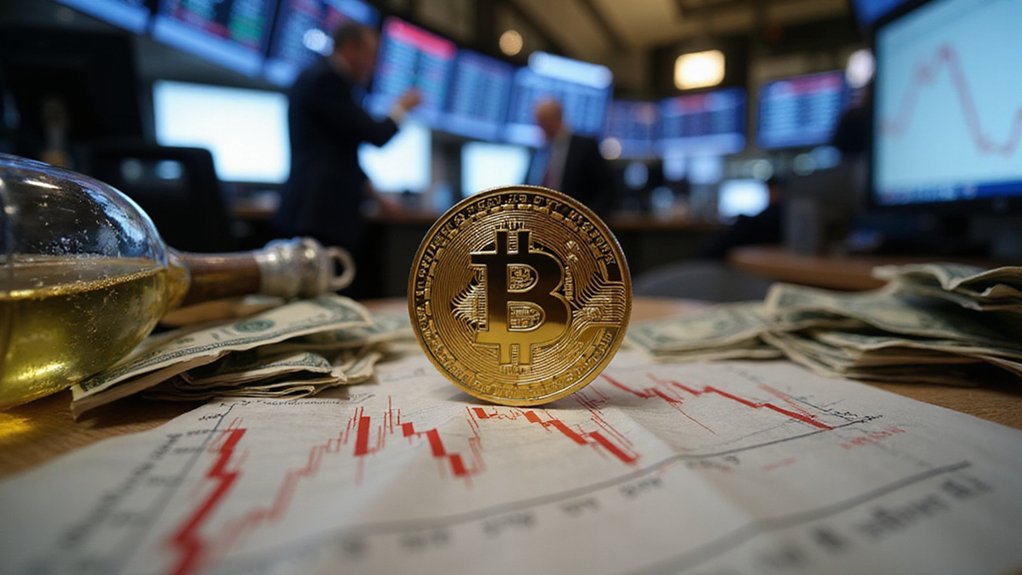How have stablecoins—those peculiar digital assets designed to maintain price parity with traditional currencies—managed to reach unprecedented heights amid the crypto industry’s perennial volatility? The answer lies in their remarkable utility and growing adoption trajectory, evidenced by April 2025’s all-time high market capitalization of $238 billion, representing the nineteenth consecutive month of growth.
Tether (USDT) continues its market dominance with a $148 billion capitalization, while USD Coin has reached its zenith at $62.1 billion. Recent data indicates that stablecoins maintain significant trading volume against other crypto assets, especially Bitcoin and Ethereum. These fiat-backed stablecoins offer users the benefit of stability while still providing access to cryptocurrency markets. Particularly, these two giants stand alone in the exclusive “$10 billion club”—a remarkable concentration of power within an ecosystem that now encompasses 213 distinct stablecoin offerings.
Despite their impressive expansion, stablecoins’ overall market share within the crypto ecosystem has paradoxically declined to 7.88% in April 2025 from March’s peak of 8.64%. This statistical curiosity reflects not stablecoin weakness but rather the even more explosive growth of other crypto sectors, which have outpaced their stable counterparts in recent months. Stablecoin transfer volume reached an astounding $27.6 trillion in 2024, exceeding the combined volume of both Visa and Mastercard.
What’s particularly fascinating is the accelerating diversification beyond USD-pegged tokens. Non-USD fiat stablecoins surged 30% to $533 million in April, while gold-backed variants gained significant traction—clear indications that investors are hedging against dollar volatility while maintaining their crypto market exposure.
The FDUSD debacle (losing peg and subsequently plummeting 46.2% to $1.25 billion) serves as a sobering reminder of stablecoins’ inherent fragility despite their purported stability. Such incidents only intensify regulatory scrutiny, even as these tokens increasingly serve as the liquidity backbone for cross-border payments, DeFi protocols, and trading pairs.
Ultimately, stablecoins occupy a unique position in the crypto landscape—neither as speculative as Bitcoin nor as functionally diverse as Ethereum, yet indispensable to both retail and institutional participants traversing between traditional finance and the crypto frontier. Their continued growth, despite proportional market share decline, suggests that stability itself remains a revolutionary value proposition in a marketplace defined by its volatility.









